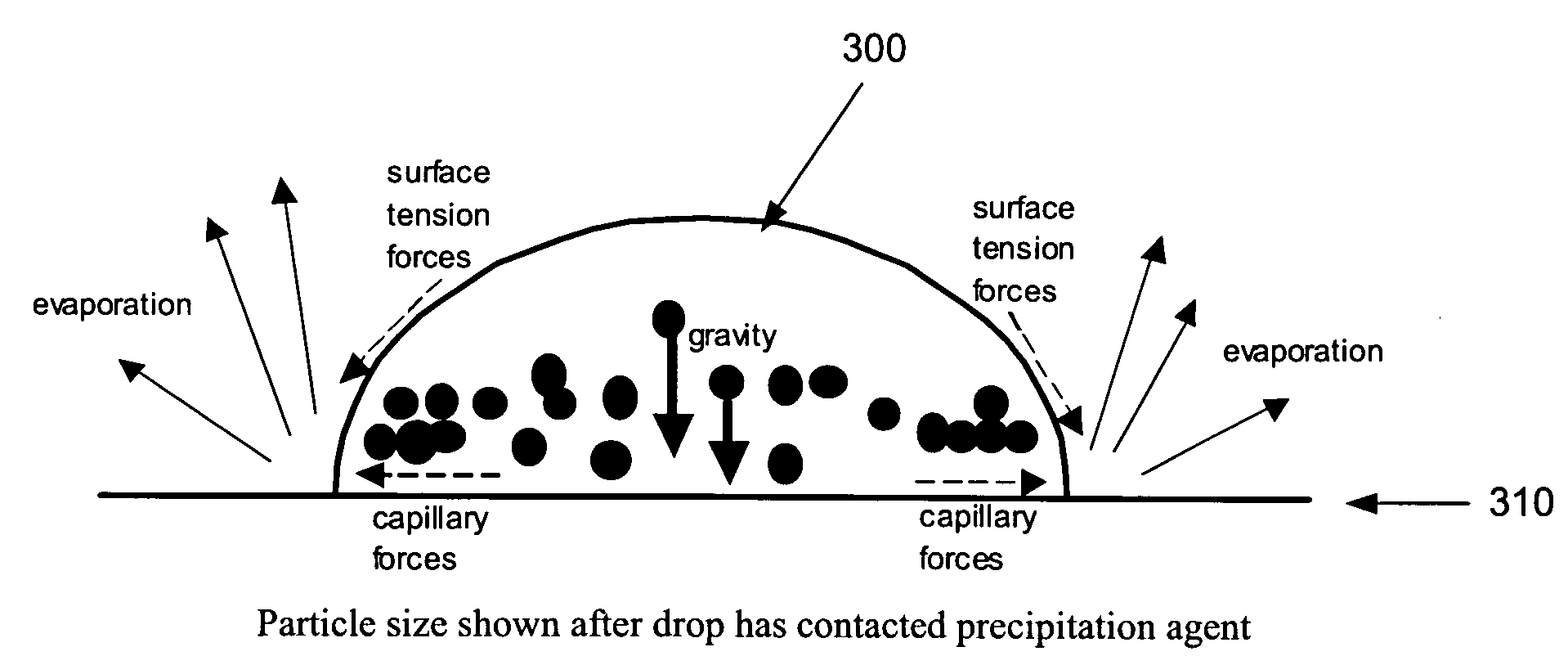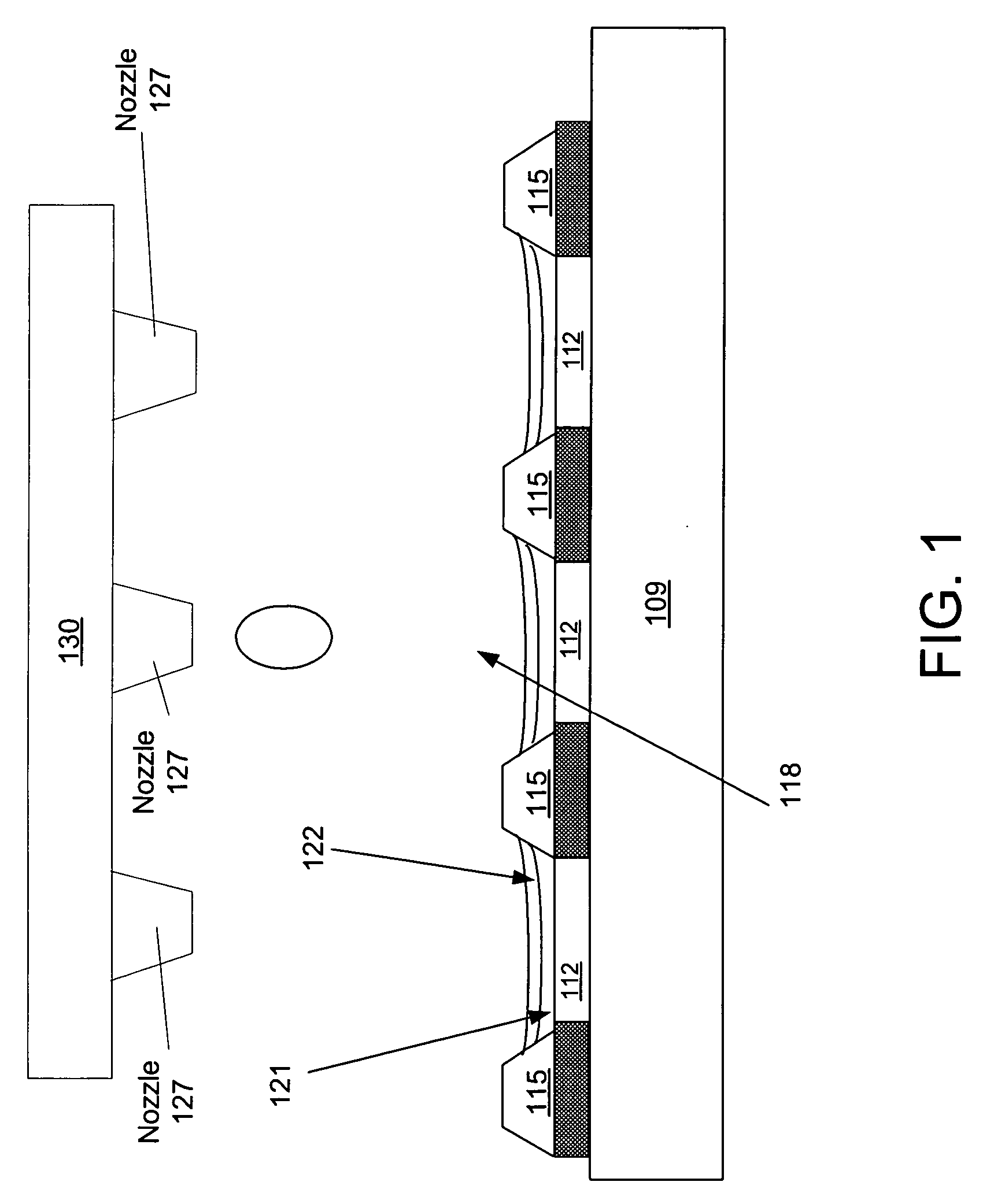Deposition of conducting polymers
- Summary
- Abstract
- Description
- Claims
- Application Information
AI Technical Summary
Benefits of technology
Problems solved by technology
Method used
Image
Examples
Embodiment Construction
[0022] In accordance with the invention, the drying profile of a deposited organic (e.g. conducting polymer) solution is modified by depositing a precipitation agent on the deposition surface prior to depositing the organic solution. The precipitation agent induces a more uniform and flatter profile when the organic solution is allowed to dry into a film on the treated surface. In the case of an OLED device, the precipitation agent is deposited on the lower electrode layer, which in a bottom-emitting OLED, is an anode. The use of a precipitation agent yields a substantially uniform and flat profile for the conducting polymer or other organic layer which is formed by drying of deposited organic solution upon the device (over the precipitation agent).
[0023] The precipitation agent can be deposited in a variety of ways including but not limited to, spin coating, dip coating and ink jet printing. The precipitation agent is, preferably, 1) soluble in water or water based media, 2) has a...
PUM
 Login to View More
Login to View More Abstract
Description
Claims
Application Information
 Login to View More
Login to View More - R&D
- Intellectual Property
- Life Sciences
- Materials
- Tech Scout
- Unparalleled Data Quality
- Higher Quality Content
- 60% Fewer Hallucinations
Browse by: Latest US Patents, China's latest patents, Technical Efficacy Thesaurus, Application Domain, Technology Topic, Popular Technical Reports.
© 2025 PatSnap. All rights reserved.Legal|Privacy policy|Modern Slavery Act Transparency Statement|Sitemap|About US| Contact US: help@patsnap.com



